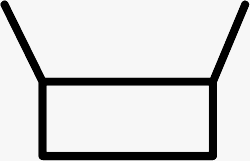By Kristina Ang
As the fashion industry continues to make strides towards more sustainable efforts, more companies are adopting a circular business model that emphasizes the sustainability of products and materials. Circularity in fashion looks at the entire life cycle of a garment, from production to discontinuation, ensuring that each step is ecologically conscious and ethical.
We’ve broken down the concept of circular fashion into two main classifications, the first being chemical circularity and the second being biological circularity. Chemical circularity is a term that describes the process by which garments are recycled into something new using already existing resources. The creativity and ingenuity required for this process allows for the garment to be turned into something that can contribute to the well-being of humans and the ecosystem. Let’s look at this model of circularity through the lens of a classic piece like the t-shirt. The apparel staple has been ingrained in American fashion and culture since the late 19th century and continues to be the epitome of timeless fashion. T-shirts are known to have a conventionally short-life as they have a tendency to be worn often, ravaged, and then eventually discarded to end up in landfills. However, as the industry progresses to adopt a more circular model, individuals are imagining new ways t-shirts can be recycled into something new or even another t-shirt.
If you’re not familiar with the minimalist brand For Days created by long time fashion veterans, Kristy Caylor and Mary Saunders, the two have based their brand around a program that allows you to send back your t-shirts once you’ve made complete use out of them. Everything you send back gets recycled in their facilities by a process where your pieces are sliced, broken down into pulp, and then upcycled into a new garment. This process repeats itself again and again allowing circularity to be attained. Cool, huh?
If a garment cannot be chemically circulated, as described in the process above, producers must ensure that the garment can be biologically circulated. Garments produced using sustainable and biodegradable materials that have outlasted their use, can be put back into the environment to break down into harmless, nontoxic elements. This alternative method, known as biological circularity, allows the garment to contribute to the longevity of the environment that it is broken down into, instead of taking up space in a landfill.
Given the same t-shirt example, let’s look at a brand that utilizes biological circularity processes to keep their products in circulation. Gaining inspiration from the natural diversity of our ecosystems around us, PANGAIA leads the sustainability space by employing some of the most innovative materials available in the industry. Among the abundant lineup of materials at their disposal, Lyocell, a type of seaweed fiber, embodies complete biological circularity that begins and ends with nature. Harvested from eucalyptus, spruce, acacia, and beech trees, the fiber creates very little waste and biodegrades in water, landfills and composting environments.
While efforts to make fashion more circular are gaining momentum, the fashion industry is still largely linear. It’s going to take a collective effort on both the end of the producers and the consumers to radically change the system. We here at Hyer Goods are committed to making a positive impact on the environment and one of the ways we plan on doing so is by elevating the circular business model of fashion in our own practices. First we started Better Leather as an initiative to redirect high quality material waste away from the landfills and upcycle it into cute, classic pieces that will last you a lifetime. And coming to you soon is the introduction of a new resale platform called Hyer Up that incentivizes people to keep their items in circulation. We know that the higher price points of sustainable fashion can act as a barrier for some people to make the shift, but we’re all about reducing impacts to the environment and the associated costs, making sustainable fashion more affordable to the masses. By posting old products that may no longer bring you joy, you can get money to use on new (or used) products while keeping existing high quality products in circulation and out of landfills.
Even with the ongoing creation of new sustainable innovations that are being made every day in our industry, there is no doubt that circularity is among the key methods to ensure a flourishing future for our industry. By keeping products' next use in mind during the beginning of the design process, this regenerative system, whereby garments are circulated for as long as possible, can be achievable.







Leave a comment